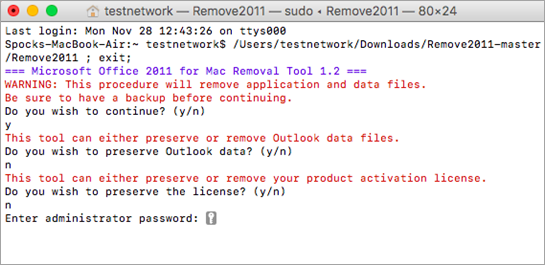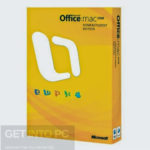Reload Microsoft Office 2011 For Mac
If Office originally came pre-installed and you need to reinstall on it on the same device or a new device, you should already have a Microsoft account associated with your copy of Office. This is the account you'll use to install Office following the steps below.
- FAQs Update Office 2011; HOW TO REINSTALL OFFICE AND UPDATE TO SP1. Download and run this script to remove Office 2011 (this will remove older versions of Office too) Optional: drag the Microsoft Office 2011 folder in Applications to trash and delete.
- Jul 22, 2019 I bought Office for Mac 2011 a couple of years ago for my old MacBook. About a year and a half ago I got a MacBook Air and so to get Office on it, I downloaded the trial, and activated it with the product key from my disk. All was well. Recently, my Office installation has been playing up.
Latest Updates!
Site Navigation
Download updates from Office Mac or use AutoUpdate under Help in the menu bar. More Info on updates
Support our site SIGNUP FOR HOSTMONSTER.COM

Support our Site
Office365 Home Premium 1YR SubscriptionRe-install Office for Mac 2011
Before you re-install
 Later versions may be available by.To automatically download updates in the future, choose Apple menu System Preferences, click App Store, then select ”Download newly available updates in the background.” Your Mac will notify you when updates are ready to install. That includes, iBooks, Messages, Mail, Calendar, Photos, and FaceTime.
Later versions may be available by.To automatically download updates in the future, choose Apple menu System Preferences, click App Store, then select ”Download newly available updates in the background.” Your Mac will notify you when updates are ready to install. That includes, iBooks, Messages, Mail, Calendar, Photos, and FaceTime.
- Restart your computer using Safe Boot mode, then restart normally.
HOW TO REINSTALL OFFICE AND UPDATE TO SP1
- Download and run this script to remove Office 2011 (this will remove older versions of Office too) Optional: drag the Microsoft Office 2011 folder in Applications to trash and delete. The script does not remove preferences nor your Identity.
- If you want to remove all preferences, delete all the com.microsoft.plist files and the Microsoft folder in your User's Library/Preferences.
- If you want to remove your normal file, it's located in the User's Library/Application Support/Microsoft/Office folder
- Install Office following Tips for a successful install
- Delete duplicate fonts installed by Office 2011. See Font Management for help:
- Update to 14.1.0 (SP1).
- Run Microsoft Autoupdater to update to most current update. Restarting between each update is IMPORTANT.
- Update to 14.2.0 SP2 after updating to 14.1.0 SP1
All Microsoft applications including the hidden ones along with all your browsers need to be quit before running the updater. For best results I always suggest quitting all apps.
Update
If you have downloaded the updater from Microsoft Downloads
Office For Mac
- Download updater.
- Log out of your User under the Apple in the Menu bar.
- Hold down the Shift key when logging in. This disables all login items including the hidden ones.
- Select the updater and install.
- RESTART
If you want to use the Microsoft Autoupdater (MAU), follow these steps:
- Open any Office application and select 'Check for Updates' under Help in the Menu bar. Once MAU is launched, select 'Keep in Dock'
- Log out/in as described above.
- Select the MAU in the Dock and download the updater.
- After it downloads, quit the MAU then install.
- RESTART
Reload Microsoft Office 2011 For Mac Still Supported
Remote desktop client microsoft mac os x. VERIFY FREE SPACE
To check how much free space is available on your startup disk:
Use Activity Monitor located in Applications/Utilities. Select the Disk Usage tab. Compare the Space Free to the Total size. More info
SAFE BOOT MODE
Hold down the Shift key when booting your computer. You can let go of the Shift key when you see Safe Boot and a progress bar. When booting into safe boot mode it forces your computer to run various maintenance tasks. More info
UPDATE BASE SYSTEM FILES
Download and run the latest combo. Running the combo updater overwrites potentially problem-causing files. Combo updaters will install on the same version as they're applying--no need to roll back or do a clean install. The Combo updates contain all incremental updates and will update files that could have become corrupted.
REPAIR DISK PERMISSIONS:
Open Disk Utility (/Applications/Utilities), select your hard disk volume in the left pane, click the First Aid tab, then click Repair Disk Permissions.